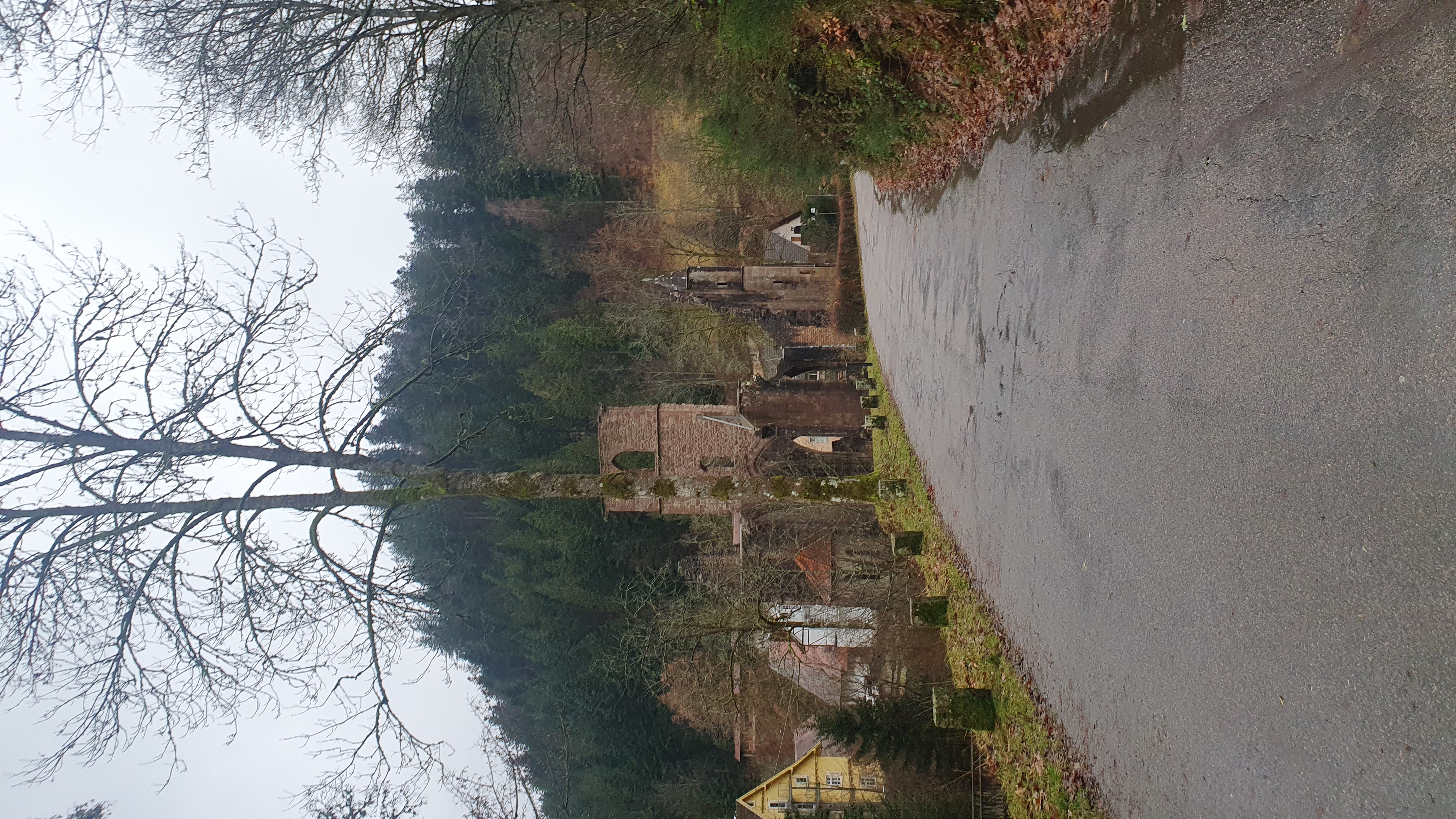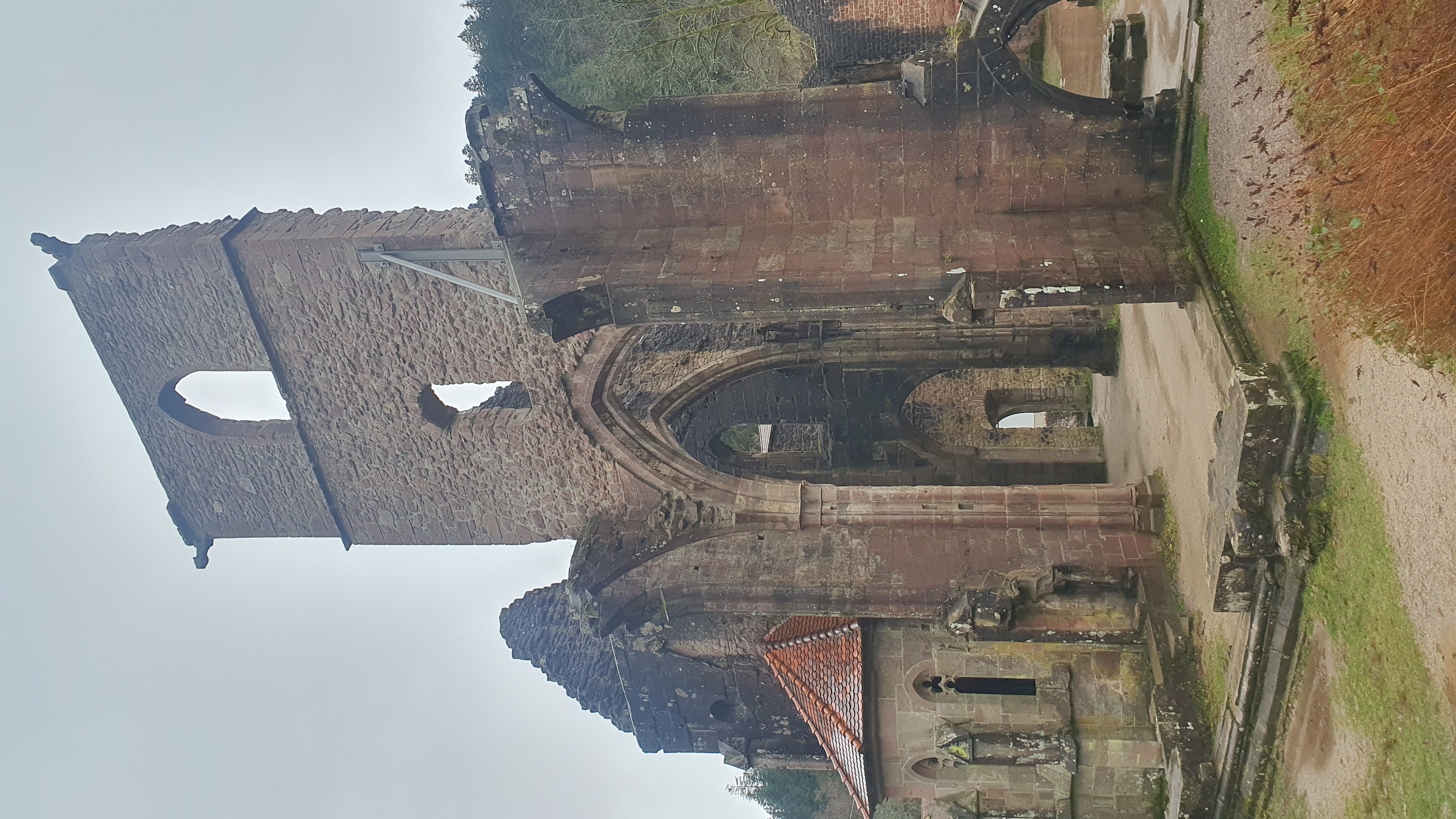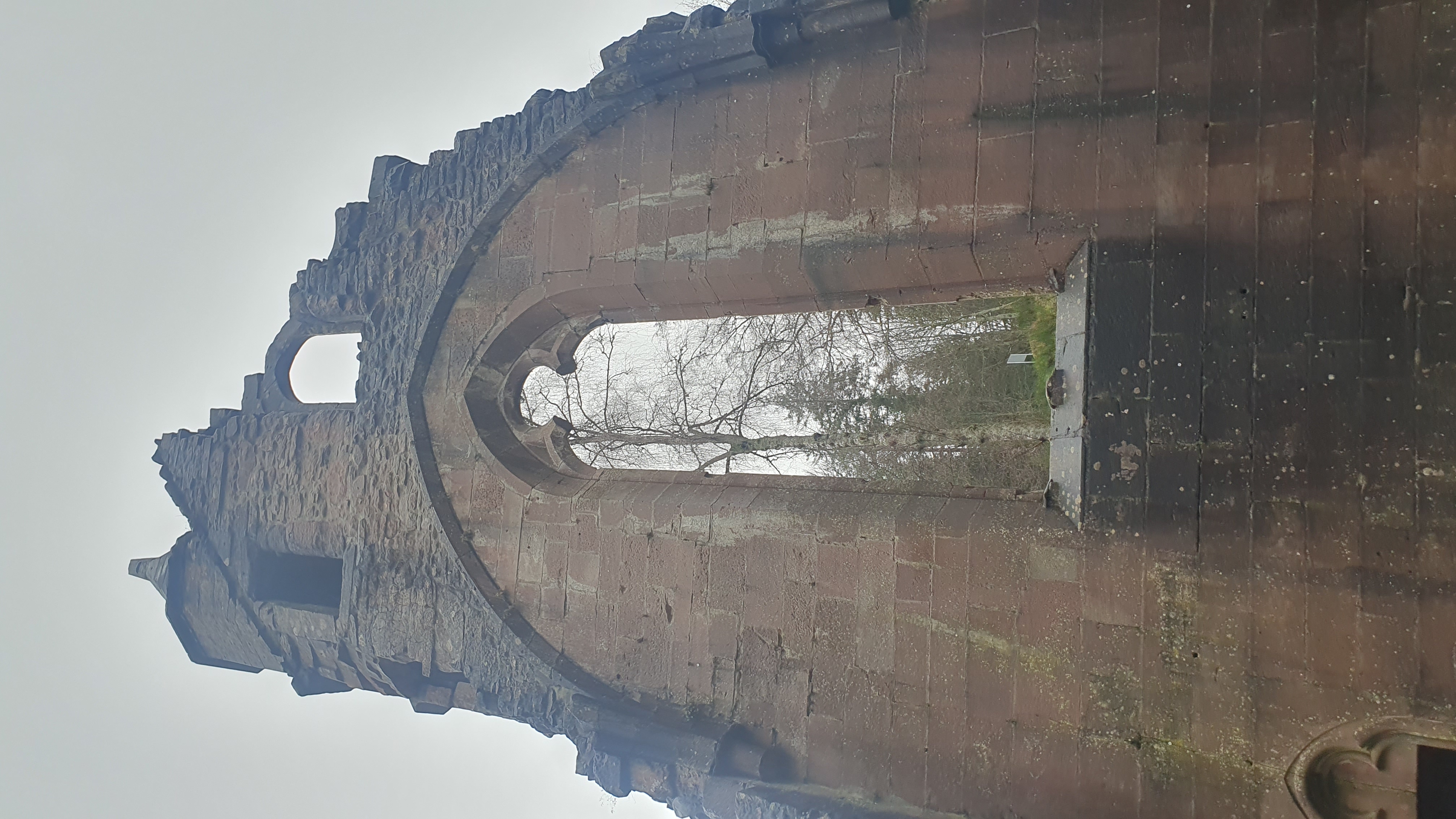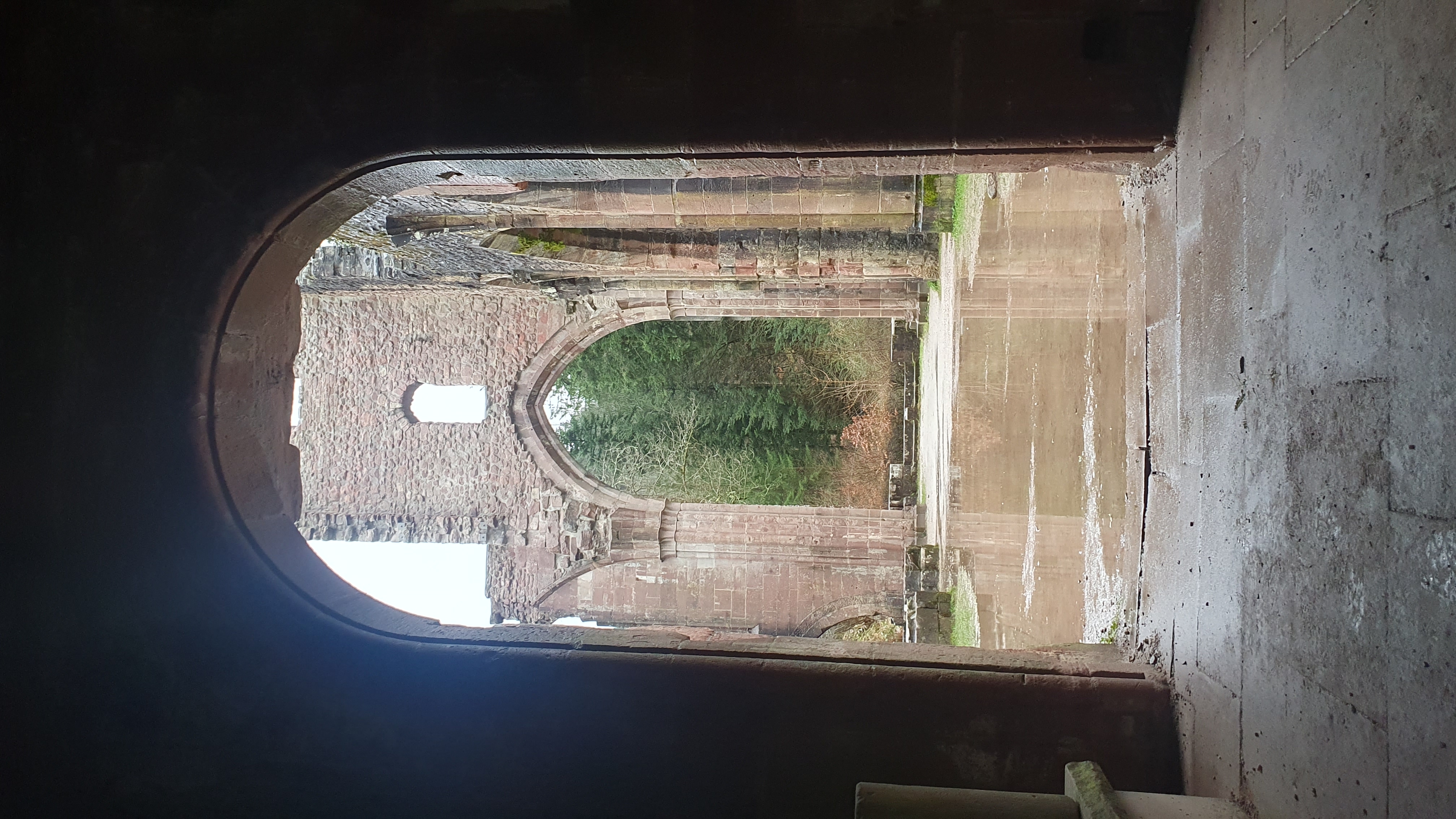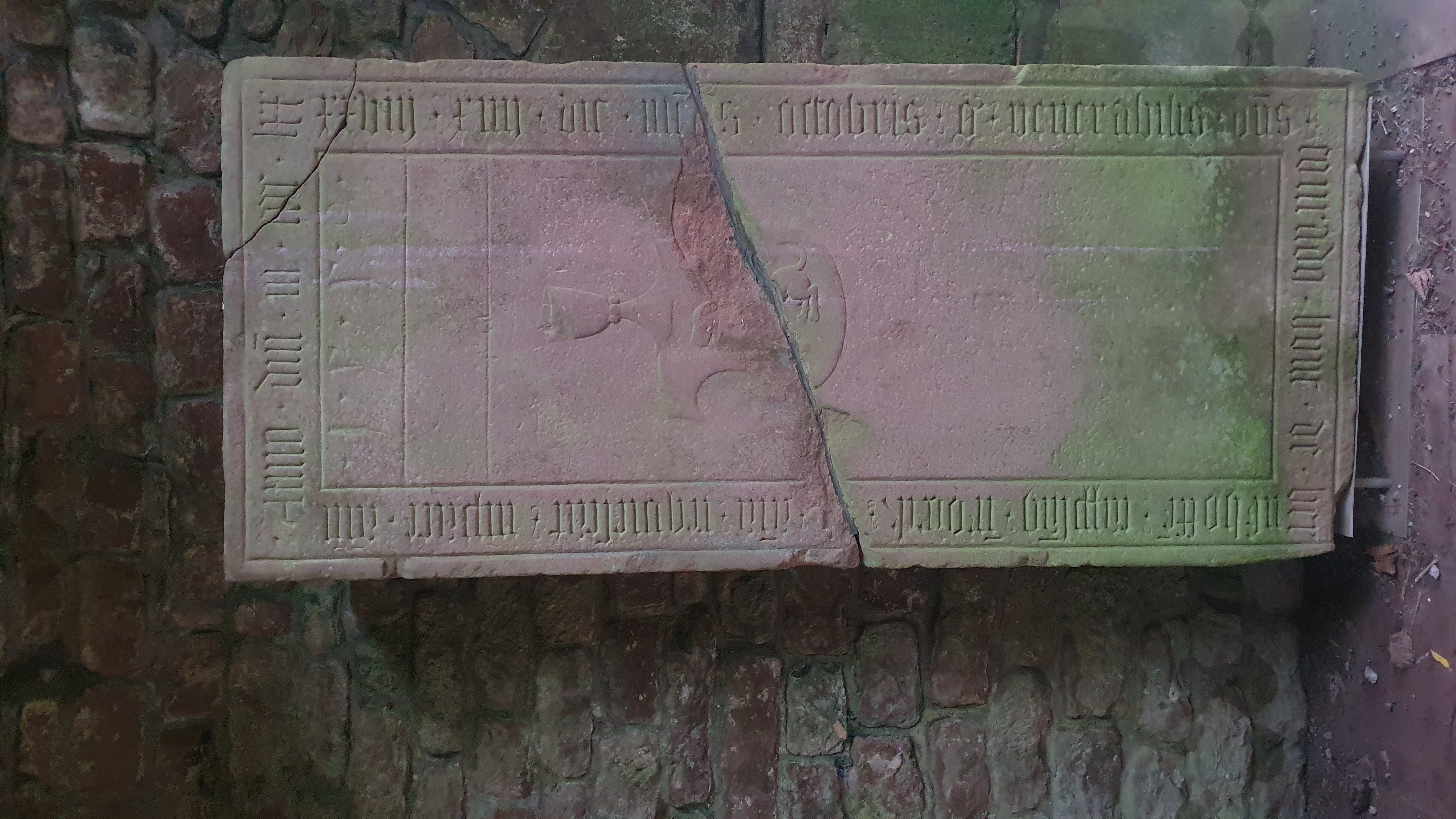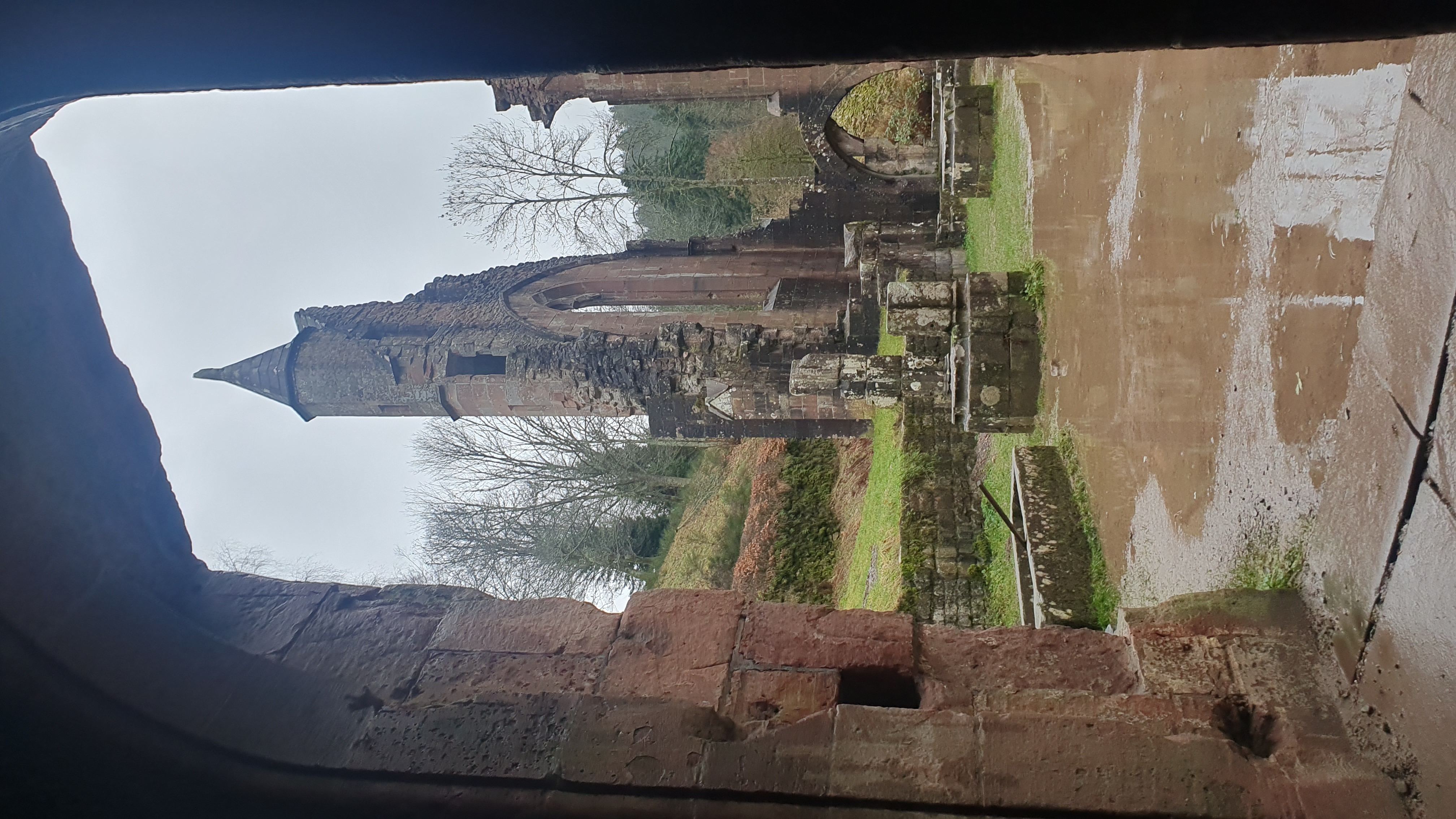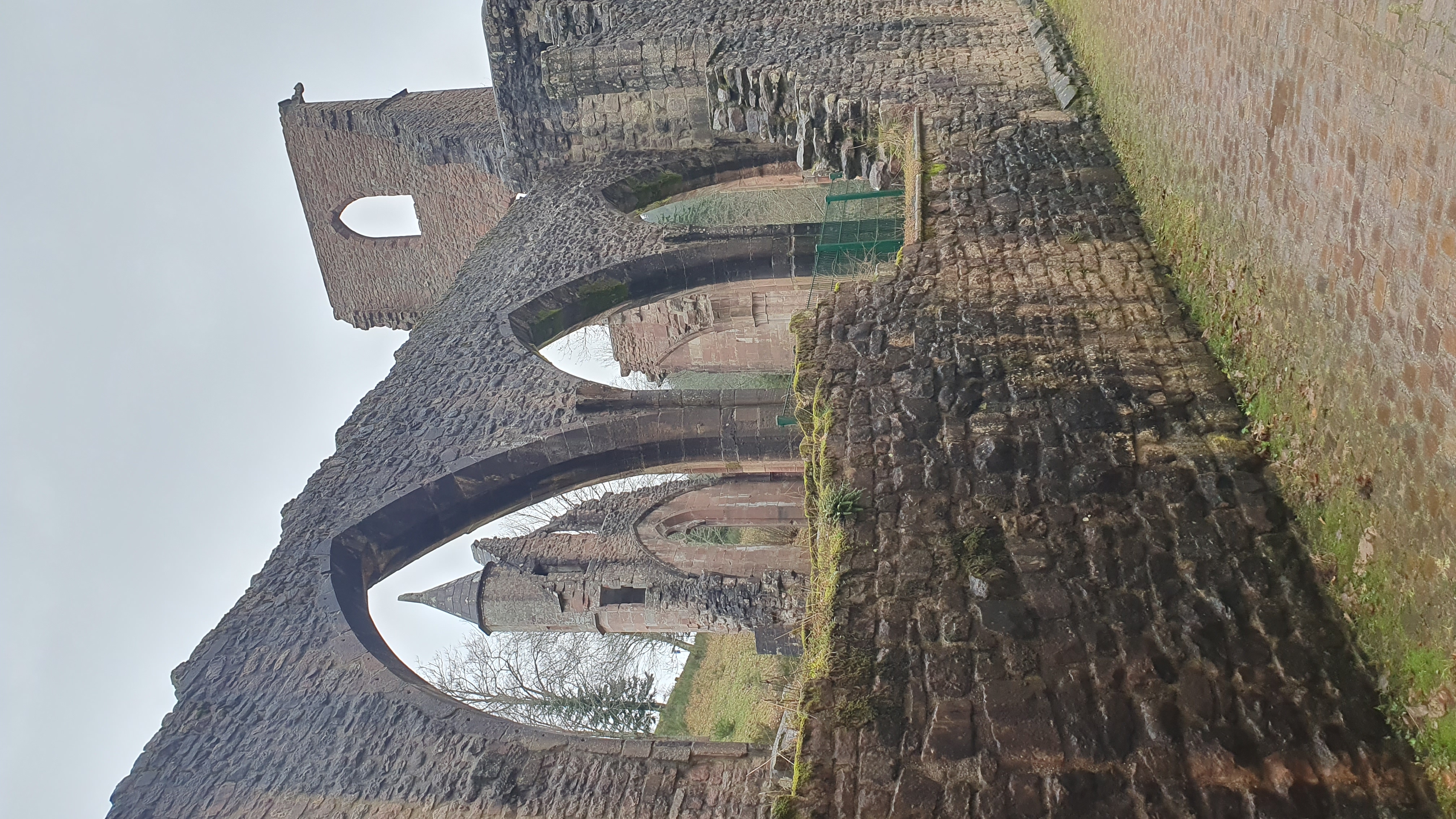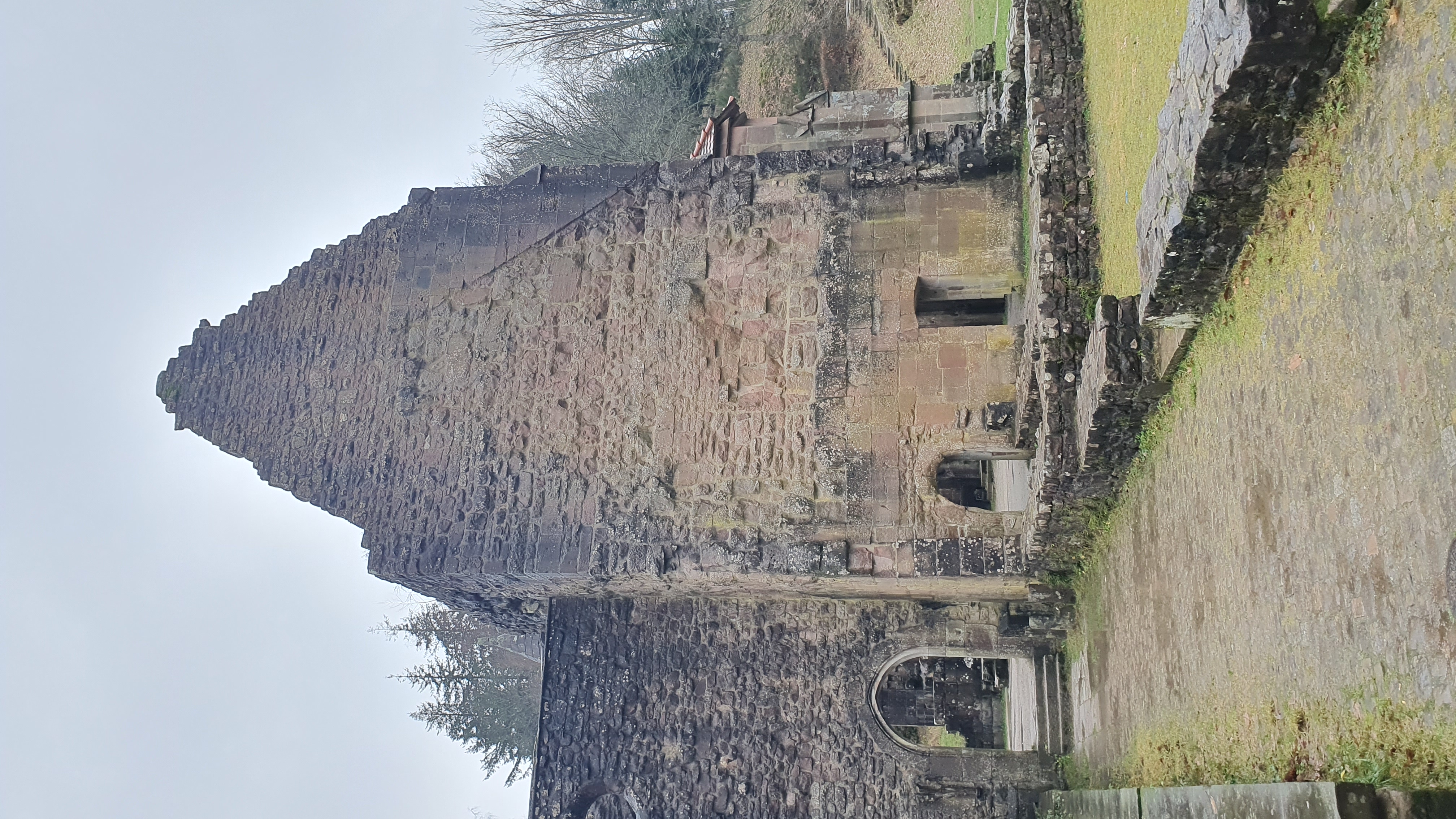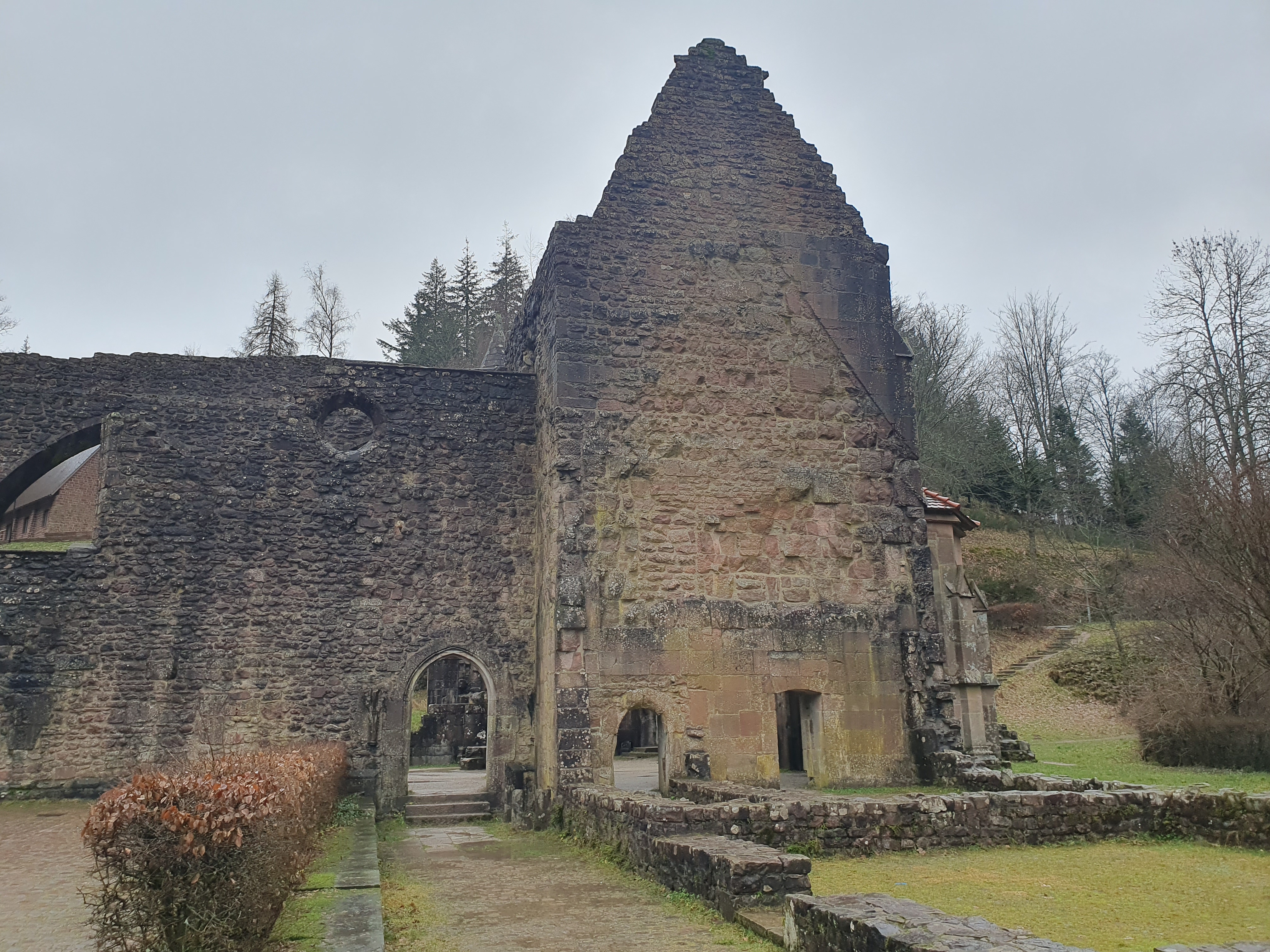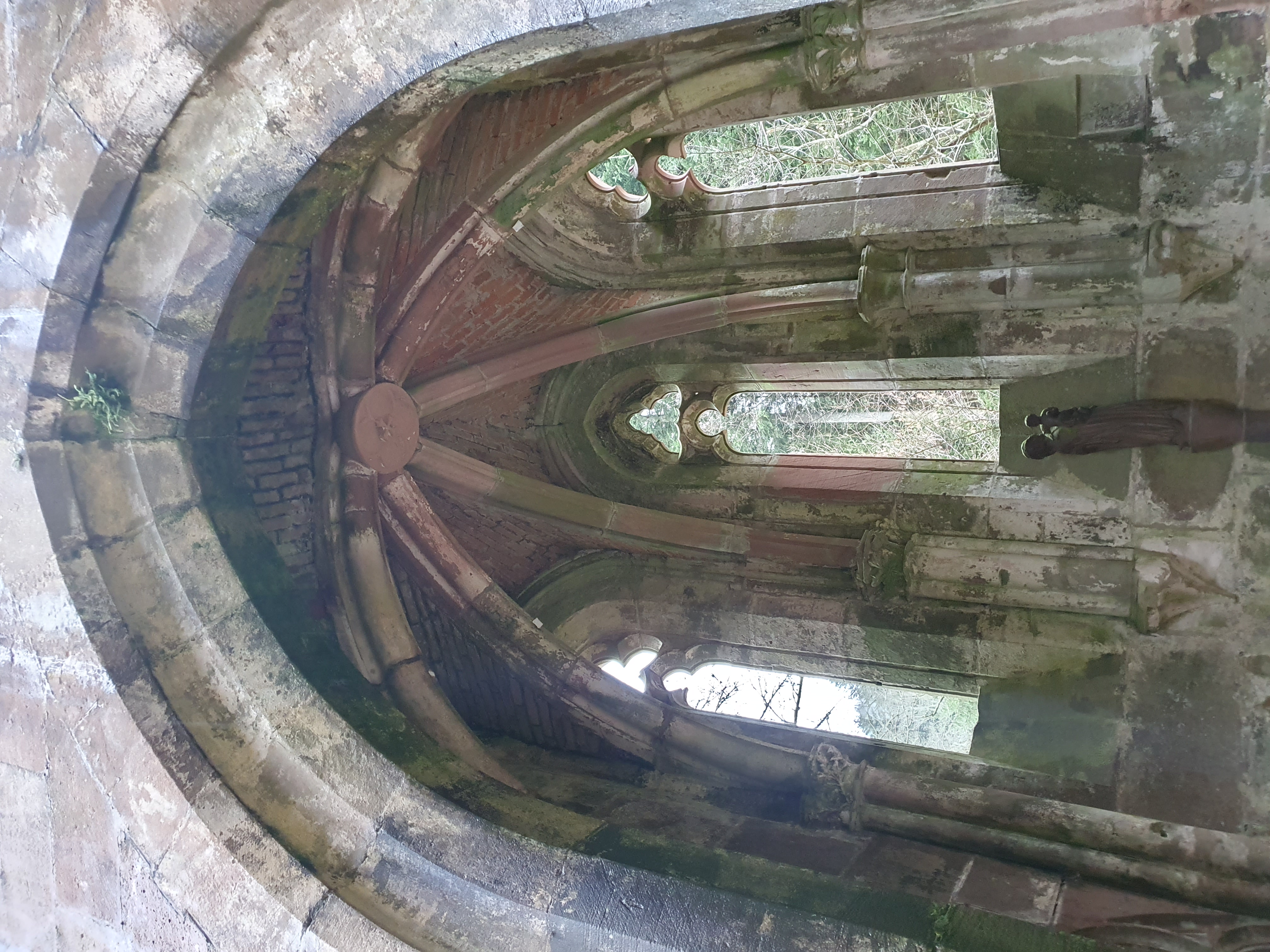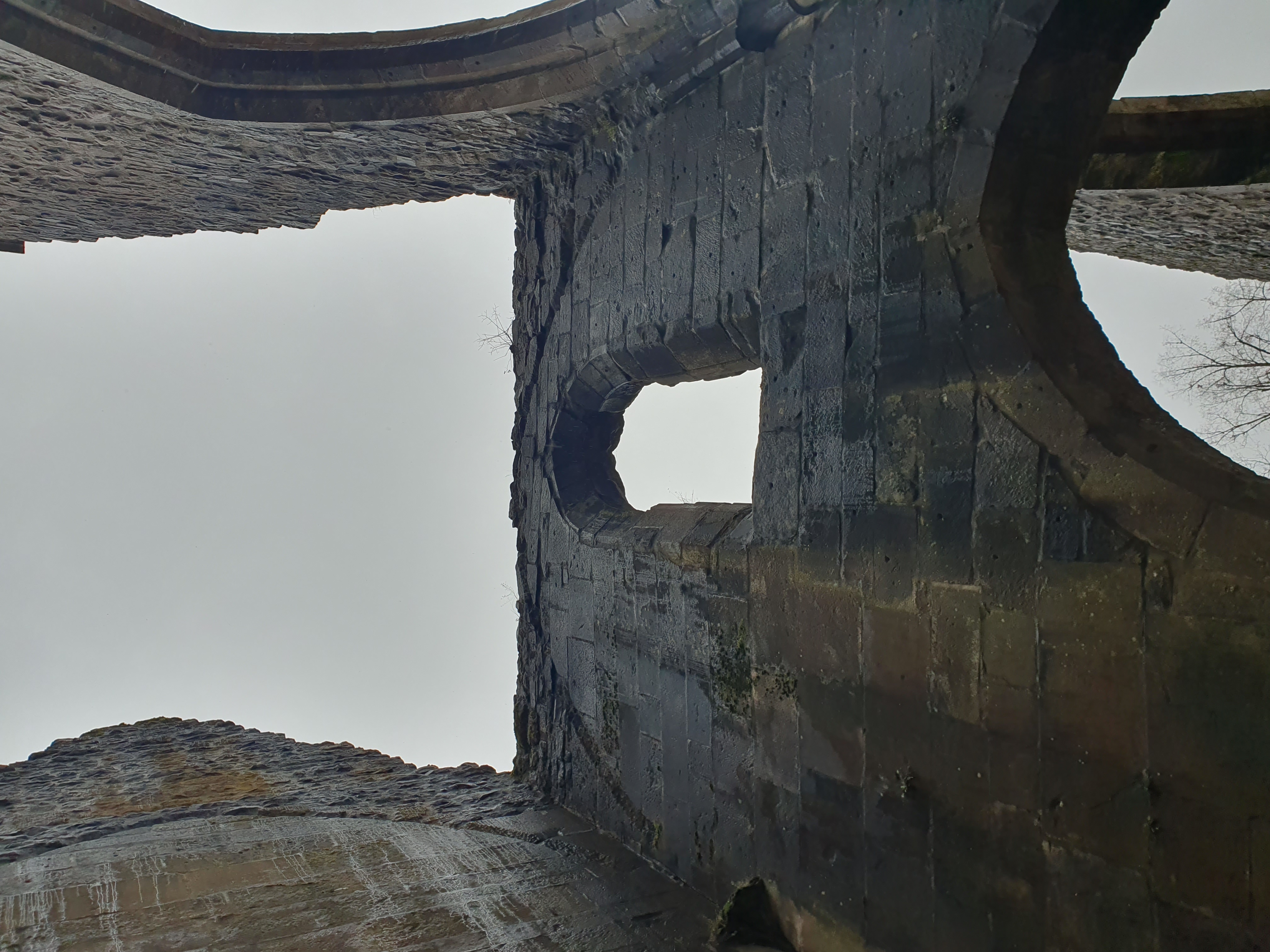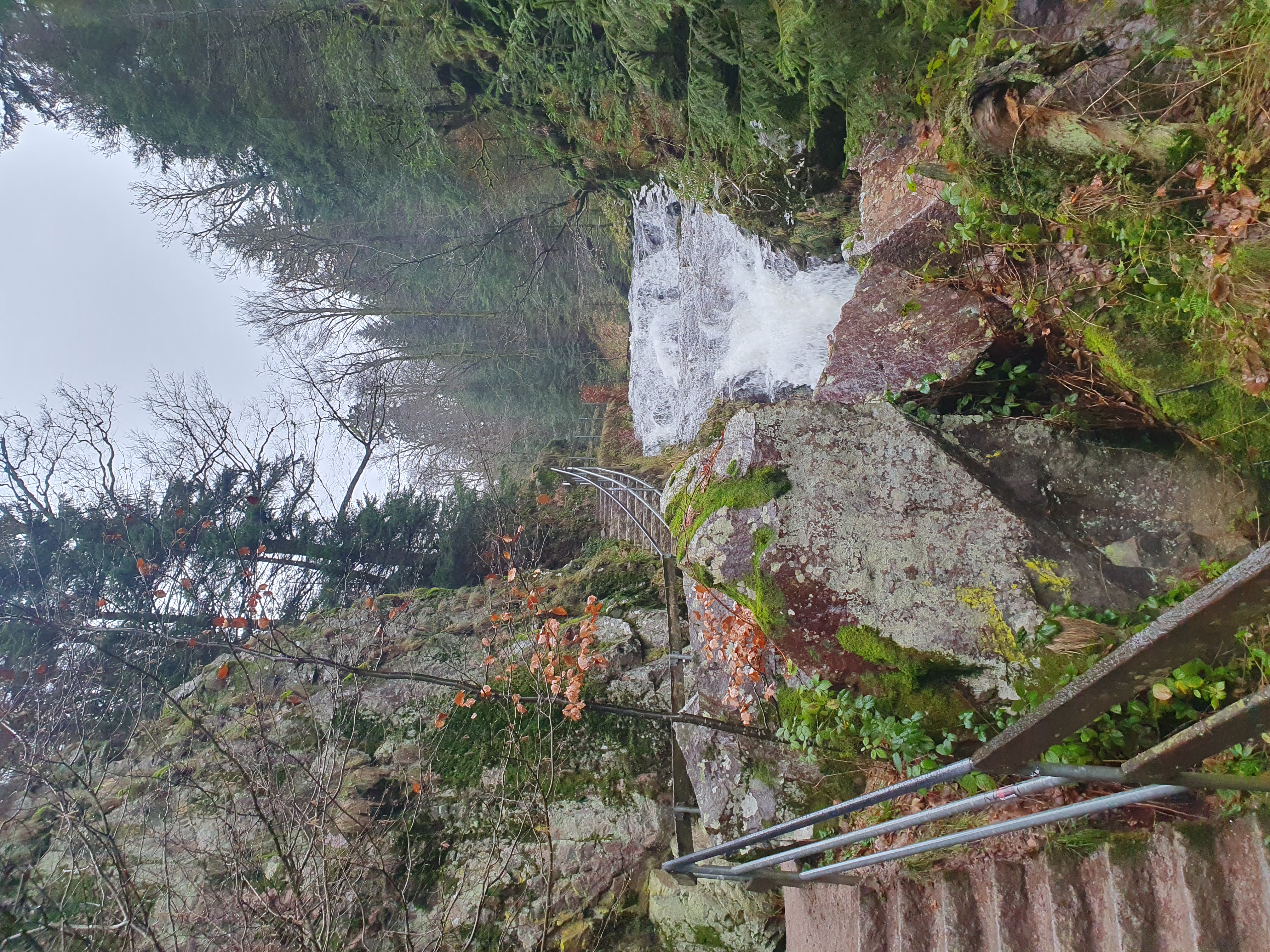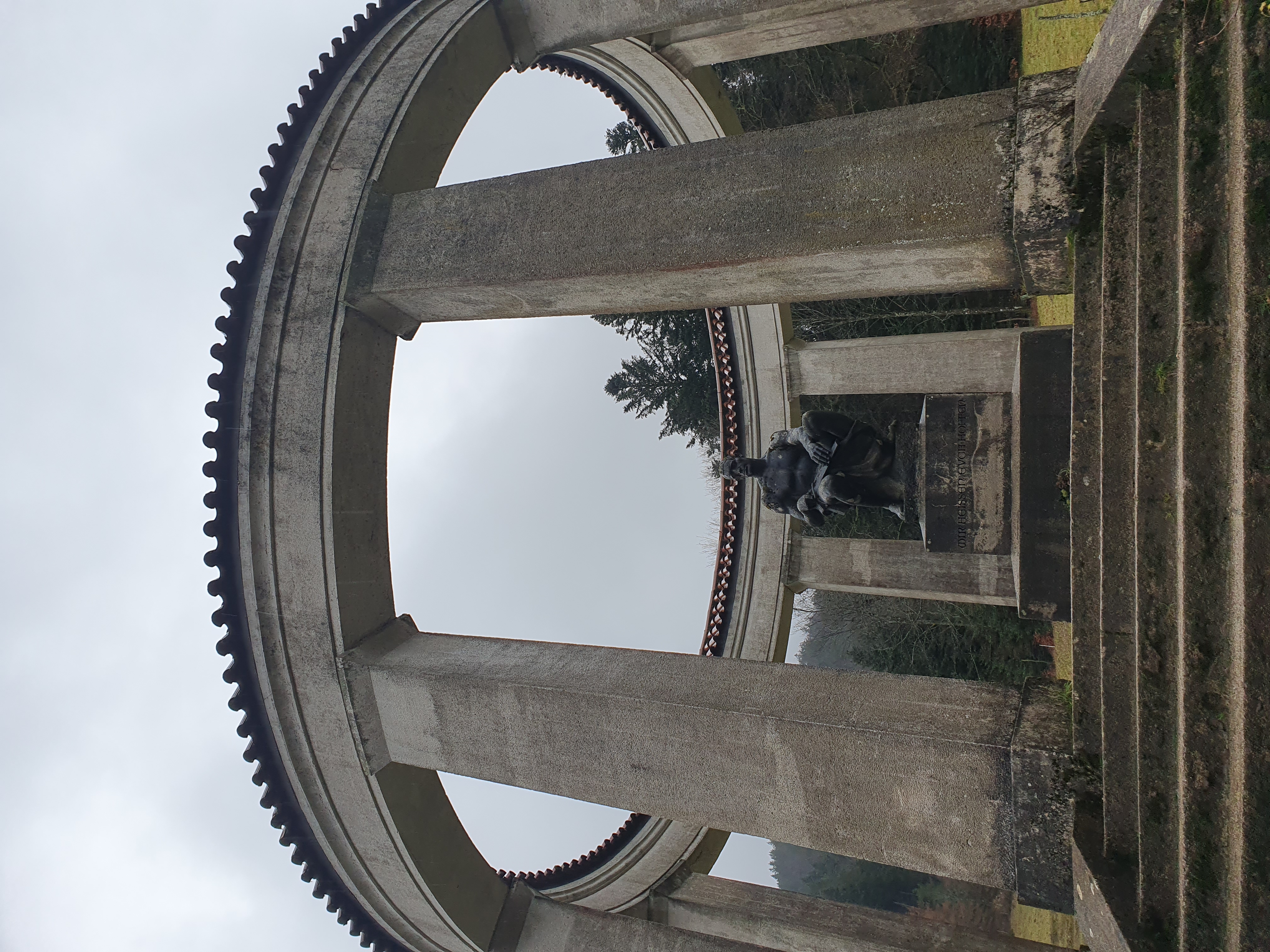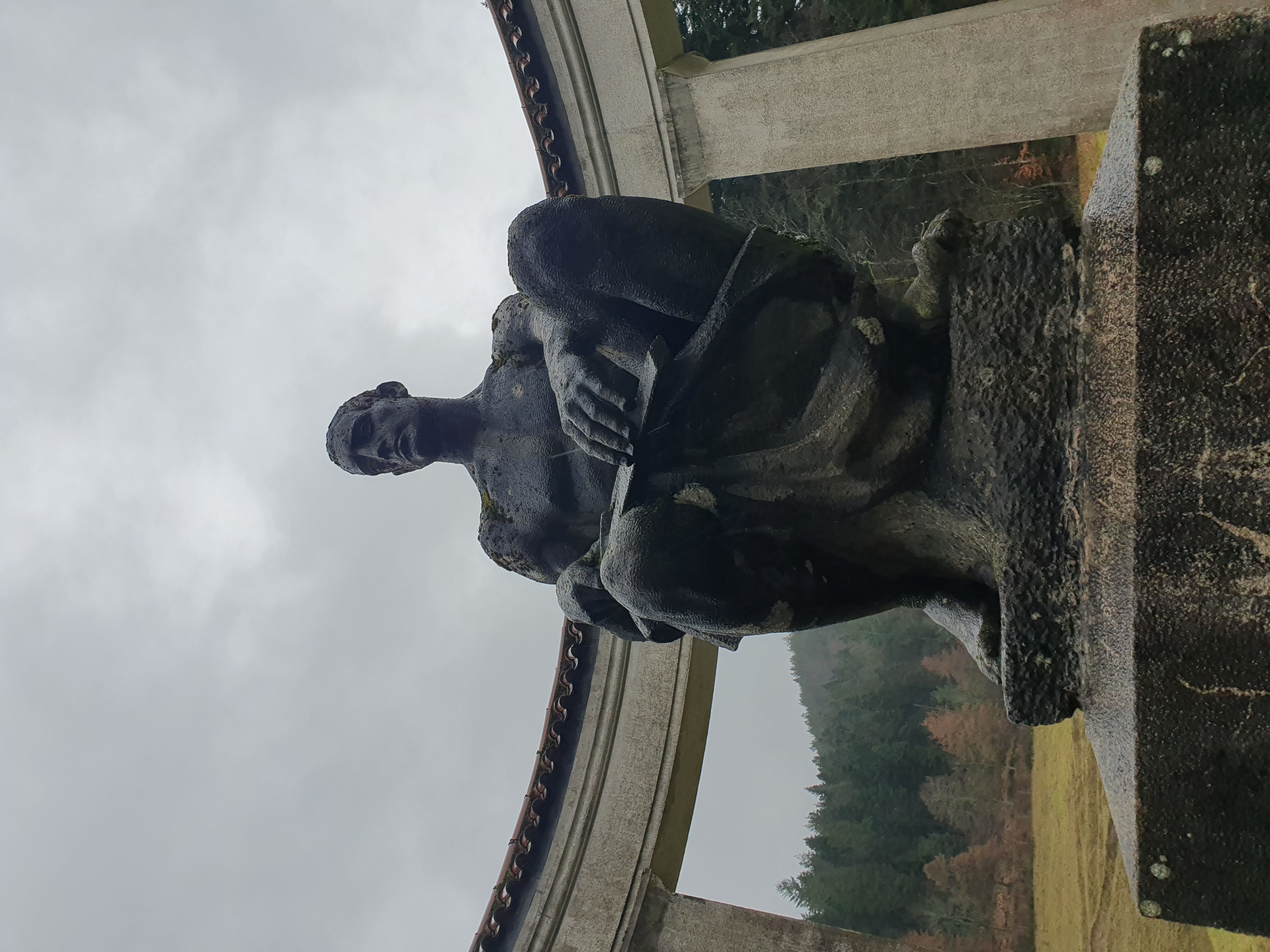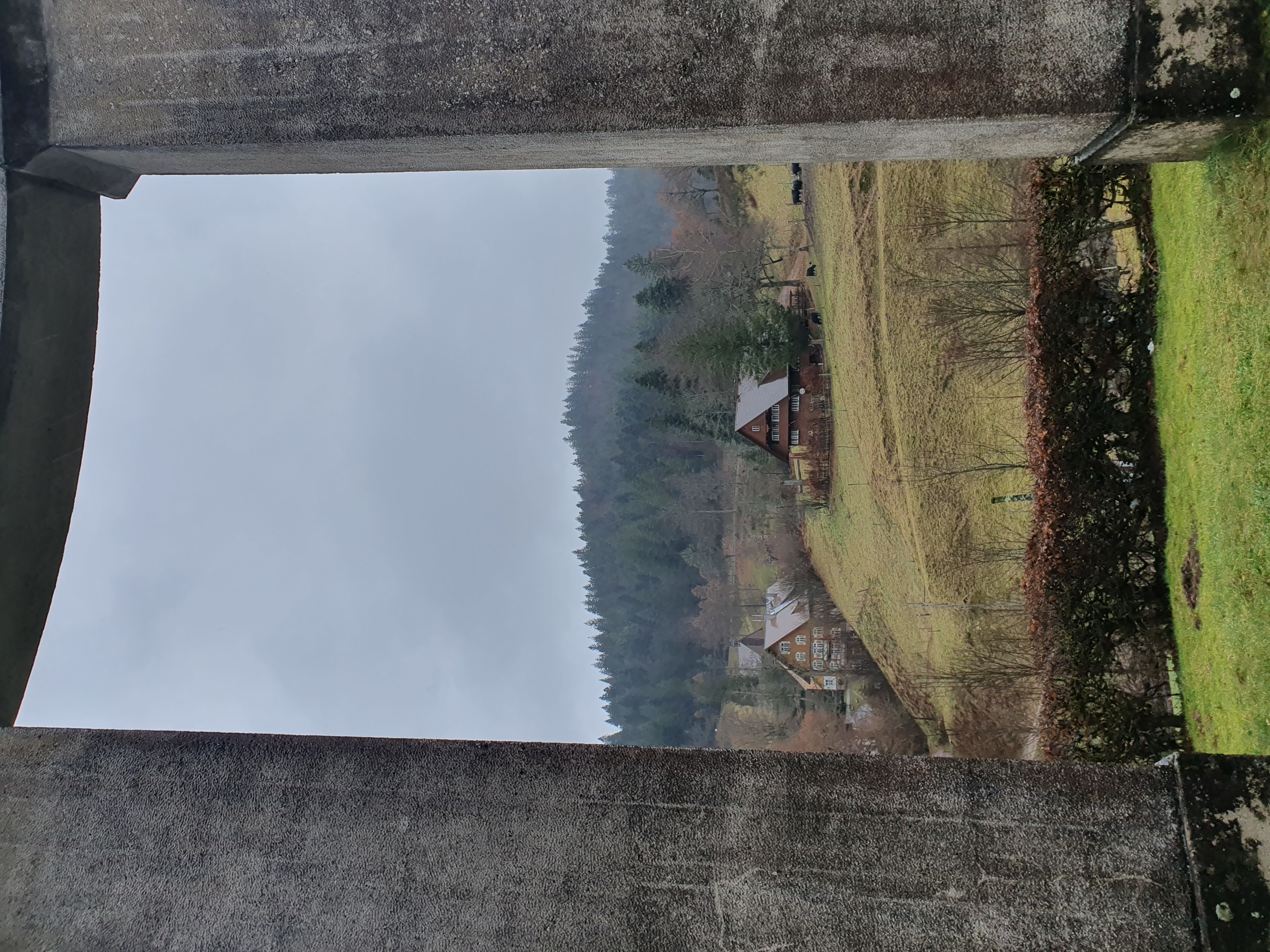The ruins of the All Saints Monastery still bear witness to a former Premonstratensian canonry in the area of Oppenau in the Black Forest. This monastery once flourished in the idyllic Lierbach Valley, a side valley of the Rench Valley, and from around 1195 until secularization in 1803 shaped the religious and cultural landscape of the central Black Forest, especially the Rench and Acher Valleys, through pastoral supervision and a monastery school.
Although leading noble families of southern Germany were involved in the founding of Allerheiligen and the monastery was given abbey status in 1657, its influence remained limited to a regional sphere of influence. Despite its elevation to abbey status in 1657, its political importance could not compete with that of other southern German monastic communities. After secularization, the once magnificent buildings fell into disrepair until the ruins were rediscovered as a fascinating tourist attraction in the mid-19th century.
The historic walls tell of a time when the All Saints Monastery was not only a spiritual center, but also exerted cultural influence as an educational institution. Today, the ruins invite you to delve into the past and explore the traces of an important part of Black Forest history.
Founding legend
Duchess Uta von Schauenburg founded the monastery in 1196. According to legend, she was looking for a suitable place to build the monastery by loading a donkey with money and letting it go wherever God would lead it.
The donkey went and reached the height where the donkey fountain with the donkey monument stands today. There the animal struck the ground with its hoof and a fresh spring gushed forth. After the donkey had quenched its thirst, it walked on to the top of the hill where the chapel stands. Here the heavy sack must have become too much for it, because it threw it off and the sack rolled down to the banks of the Nordbach. This is how the place was found where the monastery was to be built.
The monastery grew, was occupied by Premonstratensians from Erpiboldszell, and Gerungus, Uta's only son, became the first head. Today, the old foundation has been abolished and only a few people still live in this deserted desert. The history of the Allerheiligen monastery tells of a time full of mysticism and founding legends, while the ruins silently bear witness to times gone by.
Access
Access is free.



